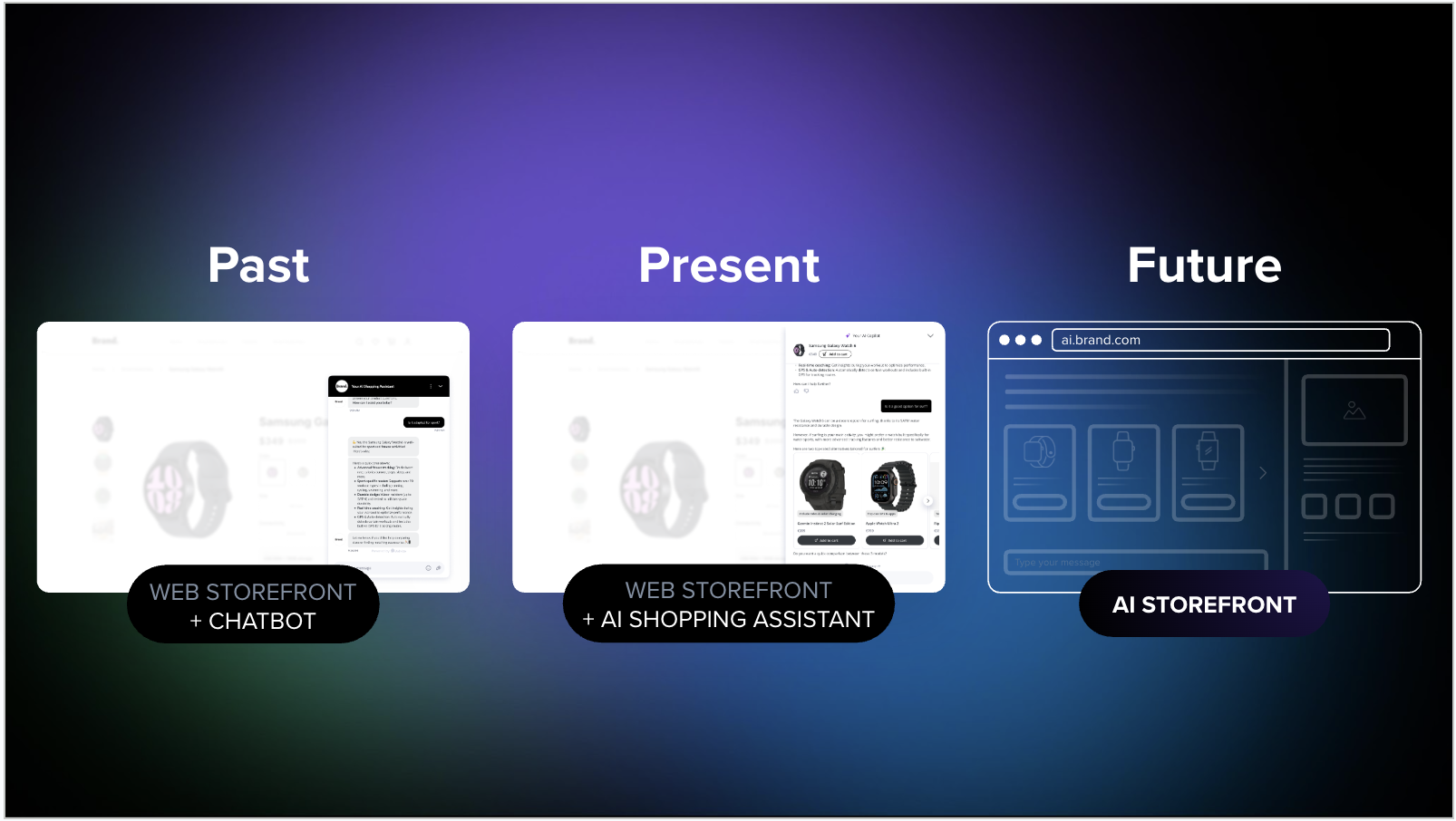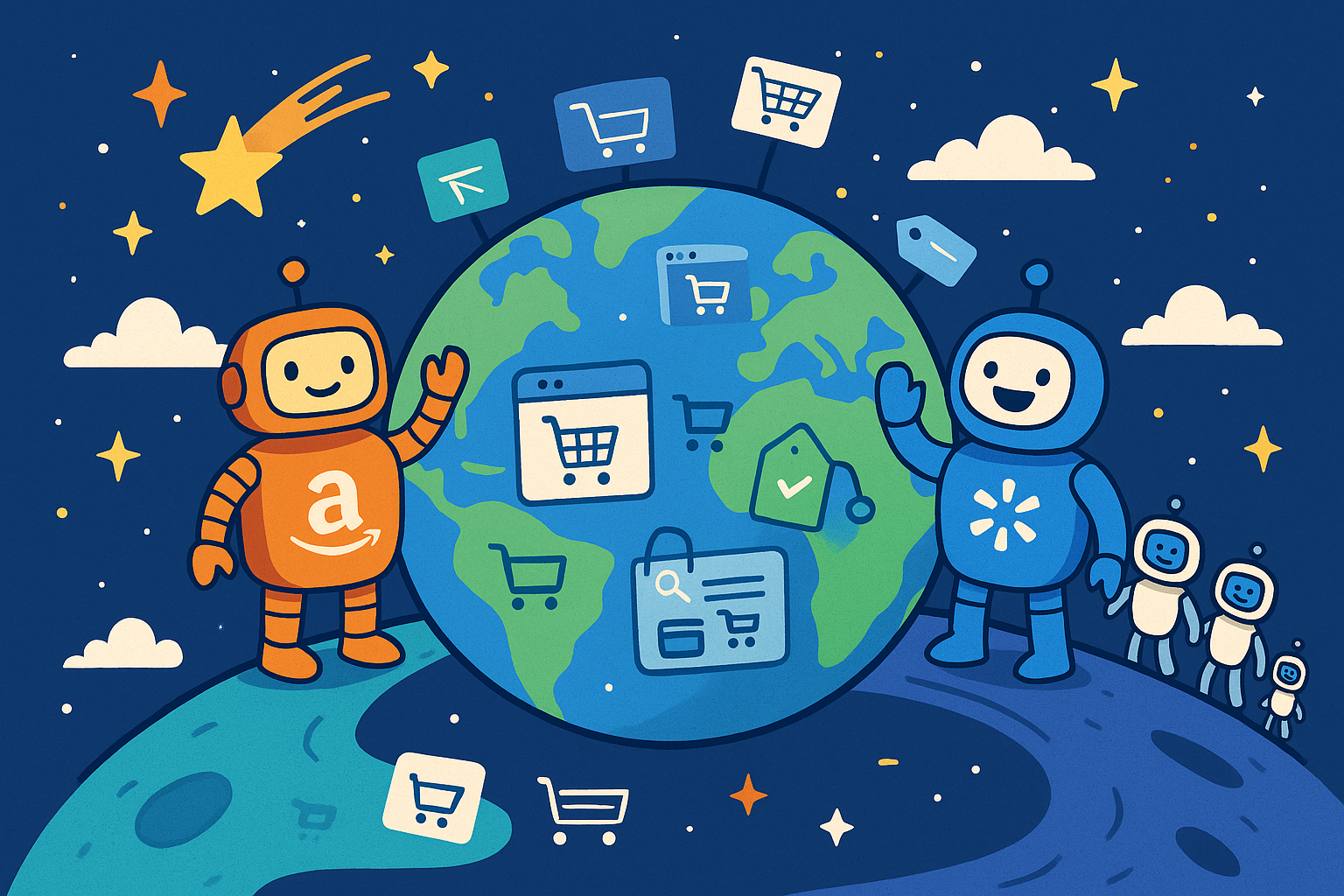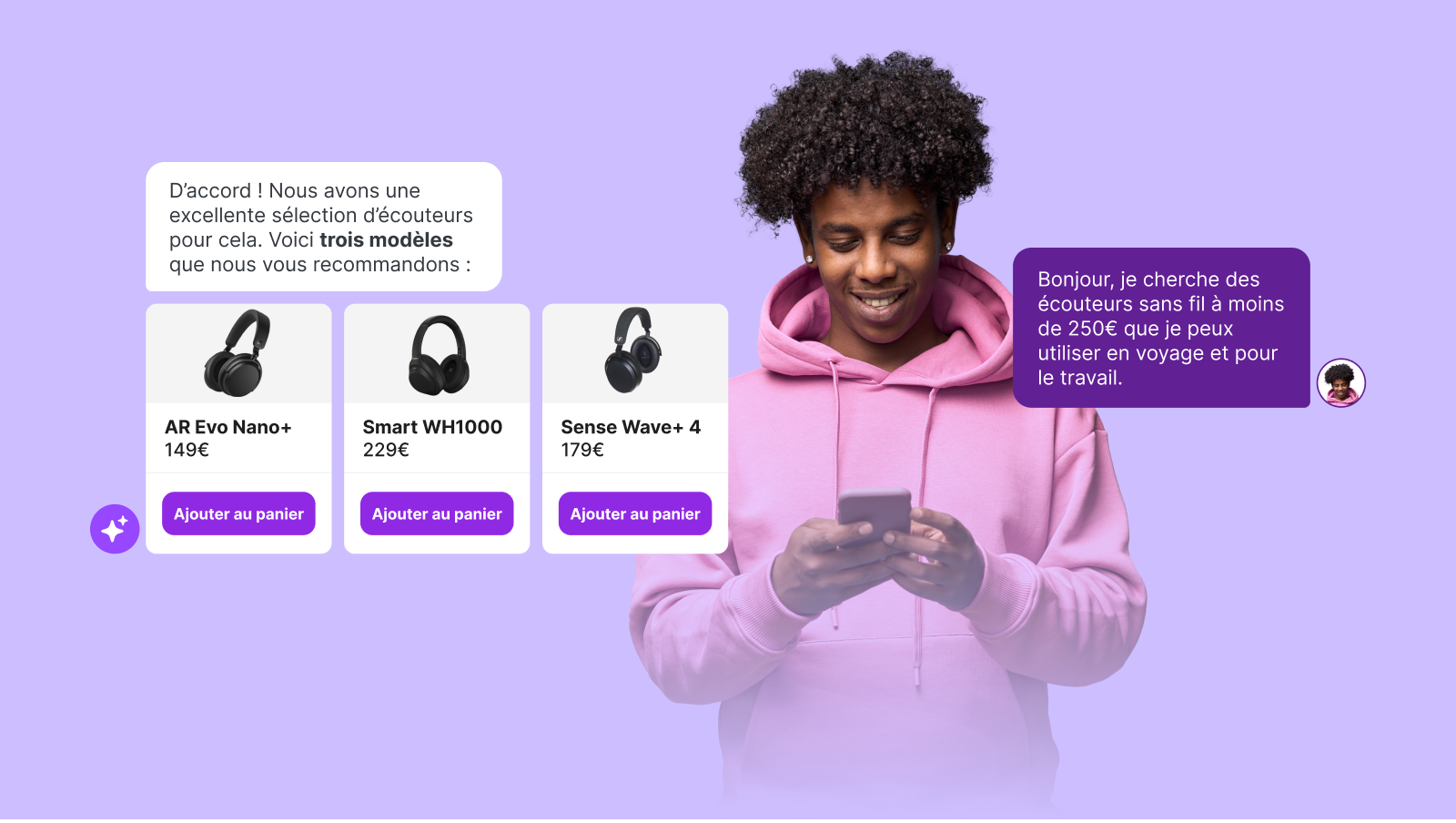How Do I Add Video in My Digital Engagement?
iAdvize
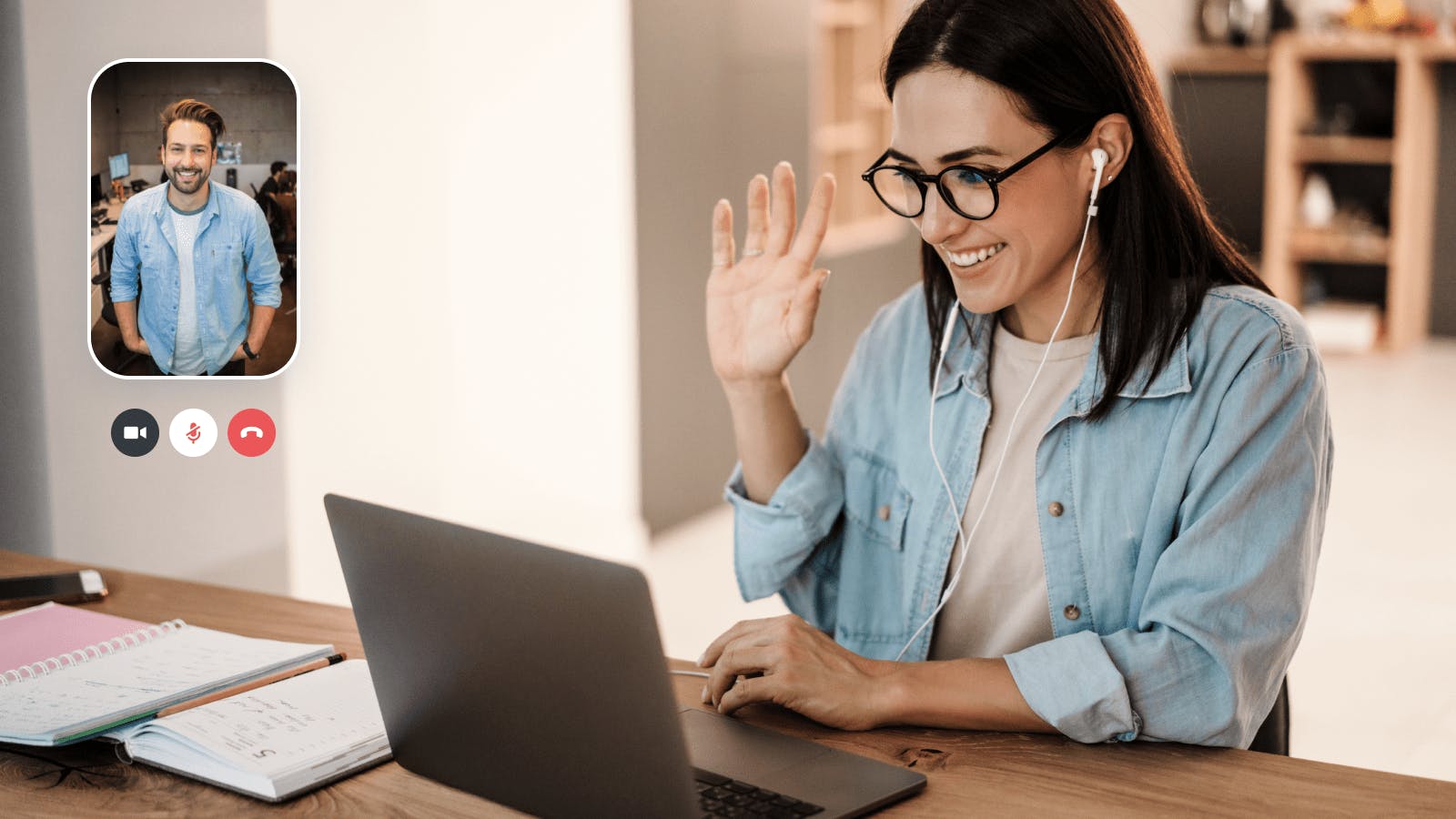
Video use was already climbing, but coronavirus pandemic lockdowns catapulted video chat into a mainstay of daily life. No surprise: Research from Ipsos conducted in May 2020 found that six in ten people said they were using video for work or socializing. Of that group, 38% said they'd never used video chat platforms before. As video use soared, many brands started to consider ways to add video in digital engagement to enhance digital shopping experiences.
Other data supports the investment in video. Eighty-five percent (85%) of people believed they'd continue to use video after the COVID era. And 74% of younger people between the ages of 18 and 34 used video chat platforms. Video chat is becoming a way of life and a preferred tool for younger consumers.
With so many video chat options available--from FaceTime to Facebook Messenger to Zoom and WhatsApp--video contact is widely accessible and easy to use. While people used various apps to make video calls to family and friends during the pandemic, they've grown accustomed to using video chat technology. It's only natural for people to start broadening their use to include access services from brands and retailers.
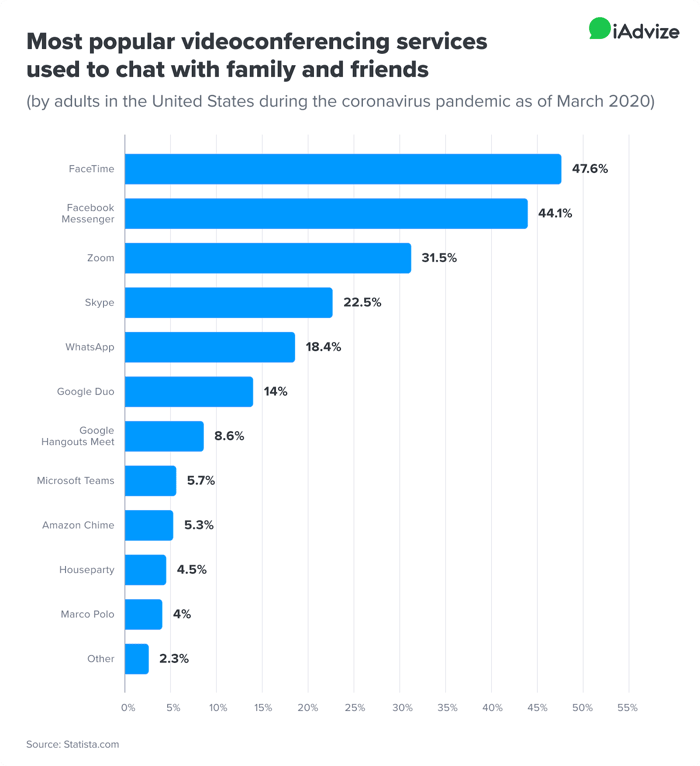
What Are The Benefits of Video in Digital Retail?
We humans rely heavily on our sense of sight to understand and remember critical information. As reported in Psychology Today, a large body of research confirms that we rely on visual cues since a significant part of the brain focuses on recording visual images. In contrast, a much smaller section of the brain focuses on words. Brands already put this notion to work with advertising that features powerful imagery and few words.
While text-based conversation always brings significant benefits, you can level up the chat experience by adding video to boost digital engagement. Not only will video activate visual processing centers in the brain and deepen understanding, but video also lets you create a personal, human connection with shoppers.
Provides a Personal Touch
Receiving support via email or text can be helpful but can sometimes feel impersonal. It doesn't help that some companies have set up chatbots that masquerade as humans. When that happens, you may initially think you're receiving human service only to find you're engaging with a machine with a limited response set.
By contrast, video chat facilitates a true human-to-human connection. Brand agents and shoppers can see each other and observe each others' expressions and non-verbal communication to build a connection. Instead of relating to an anonymous agent, shoppers can feel treated with empathy and respect.
Decreases Resolution Time
Waiting on hold is one of the most frustrating experiences around. As online self-serve and live chat has become a fact of life in digital retail, shoppers have grown to appreciate expedient service even more. While responding to contacts quickly is essential, you also need to strive to provide a thorough resolution to issues as efficiently as possible.
Why? As research from Forrester shows, 66% of people say that valuing their time is the most important thing that companies can do to deliver a positive online experience. And nearly half (45%) say they will abandon a purchase if they can't get the information they need quickly.
Live conversation can be quick, but video can accelerate customer interactions even more. Although chat requires time for shoppers and respondents to type responses, video lets dialog flow more naturally with less downtime. Plus, by sharing information visually, shoppers can help brand experts understand their questions and needs. The result is resolutions that are both efficient and comprehensive.
Supports Clear Information Exchange
The truth is, we're hardwired to process visual information quickly. In fact, researchers at the Massachusetts Institute of Technology found that the brain can process information it sees in as little as 13 milliseconds. Other studies have discerned that 90% of information sent to the brain is visual, with visuals processed 60,0000 times faster than text.
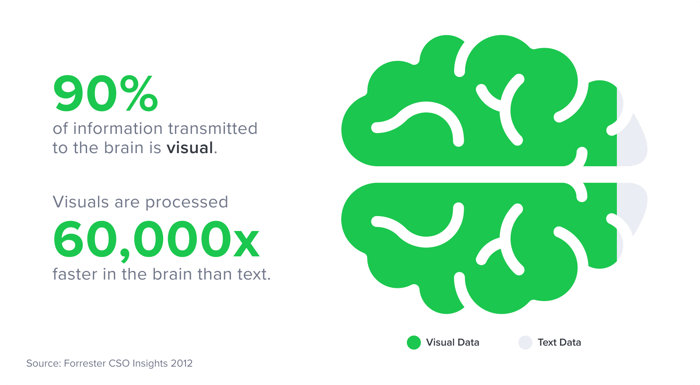
How does this tie into video customer service? Since video is a visual medium, it can help agents and shoppers get on the same page quickly and exchange more meaningful, accurate information.
For example, imaging a shopper is searching for shoes to coordinate with a dress for an event. She could describe the dress at length to the brand expert, but it can be easy to misinterpret details. Engaging in a brief video chat can let the expert see the dress and know exactly which shop options the shoppers should include in her consideration set. The advantage is clear, as the shopper can make an informed and confident purchase thanks to the opportunity to share visual information.
Higher-Quality and More Memorable Customer Experiences
It's a well-known truth that better quality customer experiences make a big impact on shoppers. They'll be more likely to buy more, stay loyal, and promote the brand to others. As McKinsey & Company explains:
Across sectors, satisfied customers spend more, exhibit deeper loyalty to companies, and create conditions that allow companies to have lower costs and higher levels of employee engagement. In that dynamic of value creation and durable competitive advantage, delivering digital services and operations has emerged as a prime mover in reshaping customer experience in almost every sector.
Also, PricewaterhouseCoopers (PwC) affirmed that 65% of U.S. consumers agree that a positive brand experience can be more influential than advertising in motivating them to buy.
Since video chat for pre-sales service is still new, first movers can set themselves apart from the pack. When you offer video, your shoppers may experience something novel and beneficial that helps them find what they need and complete transactions quickly. They'll remember this standout experience and be inclined to tell others about it.
A Drive Towards Video Innovation
During the pandemic, some brands forged ahead with initial video chat offerings. Some of our customers used video for everything from home moving quotes to personal shopping to cosmetic tutorials.
Other brands have capitalized on the potential of video chat to offer innovative experiences to customers:
- Eliminating in-person home visits: As Retail Customer Experience reported, Lowe's added a video chat service called "Pros JobSight." Through its video service, home improvement professionals could conduct video home visits with shoppers. With this approach, Lowe's kept team members employed during retail slowdowns while providing consumers with valuable home safety and product advice. Pros could view parts, identify serial numbers, and chat with customers while avoiding an initial home visit and supporting social distancing.
- Bringing the physical store experience to digital shoppers: Interior design and furnishing brand Herman Miller launched a new website to recreate the experience of its popular home seating stores for online customers. The brand saw the new virtual experiences as a response to the work-from-home and hybrid models that emerged during the pandemic. While shopping, individuals can connect with seating specialists via video chat to ask questions and view product demonstrations.
- Fusing the Physical and Digital: A luxury jewelry retailer, Goldsmiths, prides itself on the attentive personal service delivered in its retail stores. As more consumers shopped online, Goldsmiths wanted to create a "phygital" experience or one that fuses physical and digital. Video chat was a critical element of the brand's efforts to recreate in-store experiences online, deliver exceptional experiences, and grow online sales.
For some brands, events are the first foray into using video as a means to link shoppers to product experts. For example, Samsung Sweden made news with a unique and immersive product launch, according to Retail Dive. The electronics brand hosted a live event that featured an unboxing and demonstration of a foldable phone model, the Galaxy Z Fold 5G. People who were interested in buying the phone could chat with product experts. The "shoppable" livestream event helped forge connections between shoppers and the brand, while creating buzz and excitement about the new phone offering.
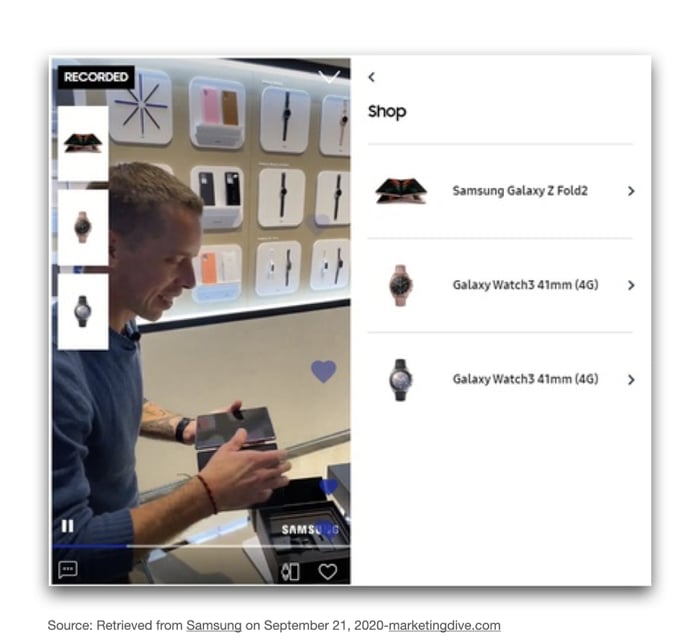
When Should You Use or Not Use Video in Digital Shopping?
As with any technology, there are some best practices to follow when implementing video for pre-sales conversation. While video can work in many scenarios, it's important to proceed wisely. Video doesn't make sense for every interaction, and some consumers may be less ready to initiate video chats with brands.
When to Use Video Chat?
In general, in-person conversational interactions are best when shoppers have relatively complex questions that can be solved through self-service or a quick chatbot interaction. As a different form of conversation, video works for similar scenarios. However, the visual element of video makes it even more ideal when exchanging visual information is valuable to progress a transaction.
Complex Product Consultations
Some online transactions are simple or repetitive, but others can be complicated. If a shopper is buying a big-ticket item or a technical product with many unfamiliar features, the buying process can feel intimidating. Similarly, if a shopper must learn new technology to make an informed purchase decision, he or she can feel overwhelmed.
Conversation can give shoppers the reassurance they need to make an educated purchase. And a video conversation can be even more valuable. As our research has found, shoppers will be more inclined to buy when they get the information they need. What is more, they'll also be more likely to stay loyal and return for repeat purchases.
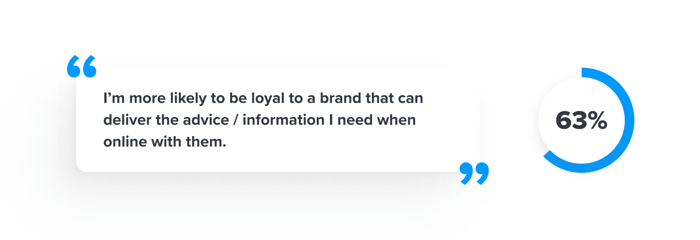
Real-Time Advice
Shoppers appreciate when brands give them the advice they need to complete a purchase. While our research found that nearly half of shoppers don't mind shifting channels to get the information they need, over one-third said they don't enjoy channel switching.
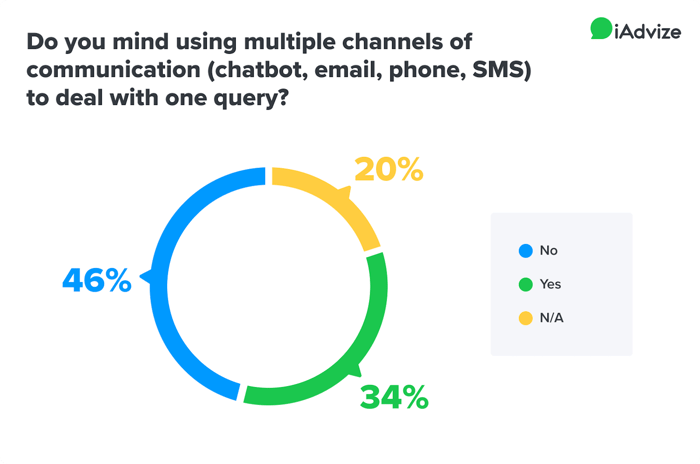
Although shoppers may be willing to do some extra legwork when they're motivated to buy, you shouldn't make them expend unnecessary effort. A video chat can facilitate the easy exchange of visual information and help consumers accomplish their shopping goals with one interaction.
- Needing to make contact several times
- Receiving generic service that makes shoppers feel as if they are being treated like a number
- Having to repeat information to multiple brand representatives
- Expending extra effort to resolve an issue
With video, brand experts can tend to the emotive element in the interaction and make shoppers feel seen and heard. This personal care and attention can also help shoppers feel like they are putting less effort into a transaction, even if they are. Also, they can gather detailed visual information and have a constructive conversation that leads to meaningful purchase advice.
When Not to Use Video Chat?
Instead of offering an option to video chat to every shopper on your site, you can be selecting. By using behavioral targeting technology, you can assess whether a shopper is nearing a purchase and likely to be more receptive to a conversation, whether through text or video.
It's important to give shoppers an option of the communications medium and not default to video for all chats. Some situations and some shoppers are not well-suited to video.
Simple FAQs
With behavioral targeting, you can discern if site visitors are browsing, actively looking to buy, or seeking to self-serve. If a shopper responds to a chat invitation and is only searching for a simple, formulaic answer, a video chat invitation may be overkill. Imagine a shopper wants a specific item and is trying to find it. Or the shopper wants to view a return policy.
Often, a chatbot is the best source to address these straightforward queries. After soliciting input, the chatbot can provide a website link to the shopper. Chatbots can work amazingly well in simple scenarios, while a video chat invitation can feel unwanted and intrusive.
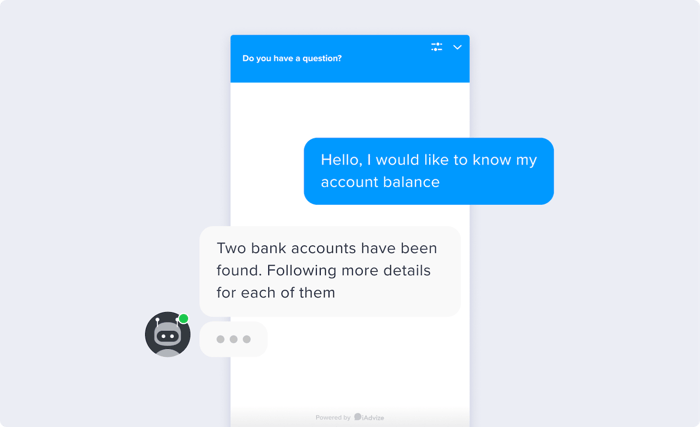
First-Time Shoppers
If someone is visiting your site for the first time, he or she may want to be left alone to explore. A video chat invitation can feel too pushy or sales-focused. And an approach that seems too aggressive can actually drive shoppers away instead of motivating them to stay.
Instead of immediately offering the video chat option, let new visitors click through a few pages first. If your technology detects a research or purchase intent, a video chat may be far more welcome.
Video Chat Is Here to Stay
While many consumers had some experience with video chat, the technology became a social lifeline throughout the coronavirus pandemic. Now that people understand the convenience of video, they'll look to use it for a broader range of interactions, including those with brands.
For brands with a conversational presence, video is a natural next step. The essential processes and infrastructure to support live 1:1 customer service are in place. Adding video elevates the experience and helps ensure fast and complete resolutions for customers while humanizing the customer experience.
It's essential to know the potentials and limitations of video instead of pushing video on every visitor. While video works well for complex consumer needs, it's not valuable for shoppers who want simple interactions or desire to self-serve. The significant benefit of video is that it allows shoppers and brand experts to exchange visual information to ensure clarity and help consumers get the information they need to make informed buying decisions.
Some brands have implemented video for pre-sales and product demonstrations or to eliminate in-home consultations. For others, the focus is on creating a rich online experience that is reminiscent of the high-touch personal service that shoppers can receive in physical stores. Even if brands don't jump into a full video support presence, they can add a video chat element to "shoppable" live streams and online events.
Providing the opportunity to exchange media and visuals is a critical factor in progressing conversational maturity to the highest levels of success. If your brand wants to differentiate based on experience, having a video chat experience as part of your conversational strategy is necessary. With video, you can give shoppers the personalized experiences they expect and motivate them to see your brand as a service leader worthy of repeat business.

.png)
.png)



